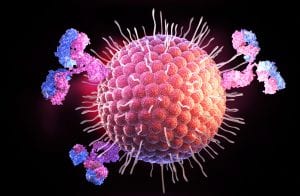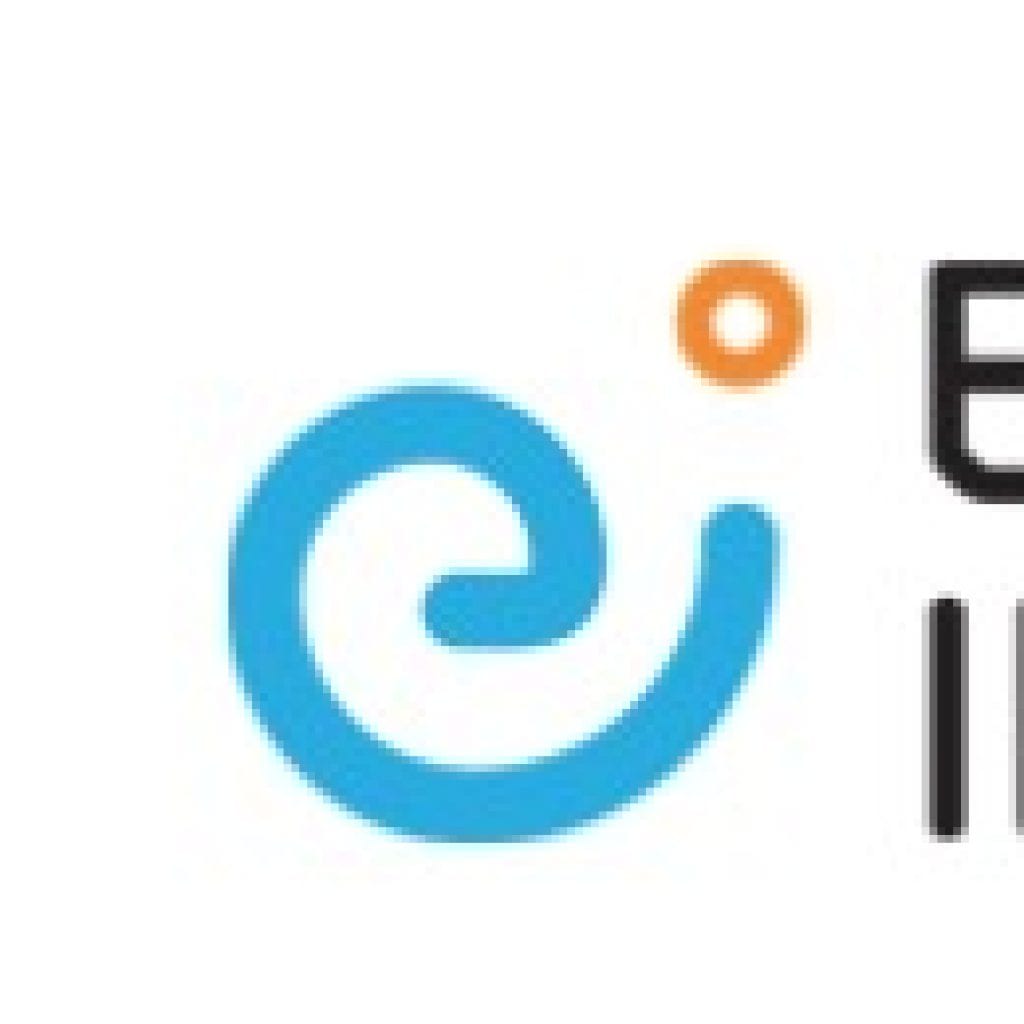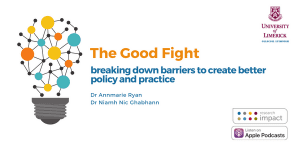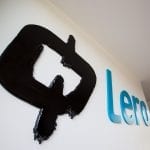
Podcast: Sepsis, a worldwide problem crying out for a solution
Dr Jakki Cooney, co-founder of UL spinout Cala Medical, based in the Nexus Innovation

Since the 1990s therapeutic procedures using catheters, stents and other minimally invasive medical devices have replaced the need for invasive surgical procedures of the past. However, many of these devices are made of metal alloys which are difficult to see during treatment. The Materials and Surface Science Institute (MSSI) at the University of Limerick has invented a new alloy that overcomes this difficulty. Medical devices made from this new alloy will be highly visible under medical x-ray imaging, making placement, manipulation and application inside the body much easier. This will significantly improve treatment quality by reducing time required for treatment, repeat procedures, and trauma. In addition to impacting patients, the project has significantly increased medical R&D capacity in Ireland and helped provide highly skilled jobs in both research and manufacturing. The research was conducted by UL in partnership with international medical devices company Cook Medical, and was supported by Enterprise Ireland.
Underpinning research
Many medical devices, such as stents and valves placed in the body through minimally invasive surgical procedures, significantly reduce patient trauma and hospitalisation time. These procedures are usually carried out with the help of some kind of medical imaging, such as X-ray fluoroscopy, so that the surgeon can see clearly where the device is placed. Binary Nitinol (NiTi) is used extensively in medical devices due to its super-elasticity and shape memory, both of which are critical in placing medical devices. The limitation of NiTi is it has poor radiopacity; that is, it is not easily visible under X-ray. This problem becomes even more acute when the size of the medical device becomes smaller.
Up to now many companies have used gold or platinum to modify existing alloys; these substances improve radiopacity but are very expensive. The solution has been to mark devices with a narrow band or other type of marker. However, X-ray visible markers are a less than optimal solution, since they do not allow the surgeon to visualise the whole device as it is being placed. The ideal solution would be a device that was fully visible under the X-ray; the challenge for the UL-Cook team was to develop a radiopaque material based on the currently approved alloys for medical devices, at a cost significantly lower than gold or platinum.
Using first principle modelling and predictive materials design, the UL-Cook team found a patentable solution: alloying NiTi with one of the rare earth elements that would be more radiopaque than the platinum currently added to NiTi as a marker band. This solution transcends common understanding of some of the established laws of physics and improves the radiovisibility of NiTi by over 80%. The solution adds 5-10% more radiopacity than platinum to NiTi, is 15 times cheaper than adding platinum, and retains NiTi’s shape memory and superelastic properties within an acceptable range for medical device application.
UL and Cook worked in a highly collaborative, flexible way throughout the project (2005-2013). UL’s project design kept scalability and competitiveness of manufacture as their central focus. On their part, Cook understood that fundamental research is critical in developing a completely new product, and engaged with UL at a level that is uncommon in an academic/business partnership. The UL-Cook team was put to test when the original project plan was completely overhauled, giving UL responsibility not only for the design and testing of the alloy, but also for laboratory scale developments, for which critical infrastructure did not exist in Ireland and had to be developed by the UL research team. The team was further challenged when the nature of the new alloy forced them to seek a number of alternative strategies for making and processing the alloy (Ref 1).
The UL-Cook team met all the challenges associated with developing a complete new alloy system: learning and mastering methods to suit new infrastructure (such as spark plasma sintering, commissioned in UL in December 2008); developing both conventional and custom-built infrastructure (such as hot and cold metal-rolling benches and an isothermal metal extruder); and solving materials-related problems (such as hot shortness, interdendritic segregation, and surface crack propagation). The team’s success was built on excellent communication, collaboration, openness to out-of-the-box solutions, ability to assess risk, and steadfastness in implementing contingency plans.
The facilities and expertise developed in UL during the project resulted in a novel powder metallurgy process to replace conventional induction melting, which had proven less viable for producing this new alloy. In February 2013, the team demonstrated a prototype radiopaque NiTiEr wire; the technology is scalable and has been transferred to Cook for device development.
In short, the new alloy developed by the UL-Cook team will make medical devices fully visible under X-ray, in a cost-effective way. The project provides a stellar example of industry-academia collaboration that produces breakthrough innovations with potential worldwide benefits.
Granted Patents
Grants
ERNOL (Er doped NiTiNOL); Enterprise Ireland/Innovation Partnership.€693,589; 2011-2013 (1.5 Years) PI: Tofail Syed; Collaborators: Peter Tiernan, Tim McGloughlin.
RENITI (Rare Earth doped NiTi); Enterprise Ireland/ Innovation Partnership/EI-IP-2008-0545; €1,052,490; 2008-2011 (3 yrs); PI: Tofail Syed, Collaborators: Peter Tiernan, Tim McGloughlin
Cook Direct Funding; €25,000; 2008 (3 months); PI: Tofail Syed; Collaborator: Tim McGloughlin
NiTi alloys with Higher Radiovisibility Enterprise Ireland/Inovation Partnership €322,025; 2005-2008 (3 yrs); PI: Tofail Syed; Collaborator: Tim McGloughlin
Clinical impact
Patient trauma and hospitalisation time have been significantly reduced by medical devices such as stents and valves which can be placed in the body through minimally invasive surgical procedures; an estimated 1 million stents are placed annually in the USA alone. However, high X-ray visibility is critical during surgery to ensure exact placement of these devices while keeping the patient’s X-ray exposure to a minimum. Radiopaque NiTi will significantly enhance the visibility of these devices by 80-100%, providing ease of placement, minimising patients’ trauma during deployment, and significantly reducing the radiation dose received by a patient in his lifetime. The availability of such metals will allow physicians to fully visualise the devices they are manipulating within the body. This will significantly reduce errors in device handling and placing, improving medical outcomes for patients.
Economic impact
The global market for minimally invasive surgical devices is estimated to reach the level of €17 billion – €26 billion in 2015/2016. Therefore, the market opportunity for a superelastic alloy with fluroscopic visibility is very significant. “Tests on a prototype wire of the newly developed alloy have shown its potential for use in a number of Cook products. The fact that the raw materials are more viable than the platinum added solutions also means that the commercialisation potential of this newly developed alloy is very high.” (Source 2)
Cook Medical is the largest privately owned medical device manufacturer in the world, with a worldwide workforce of over 10,000. Its Limerick plant employs around 800 people; it is the European distribution centre for Cook products, and the worldwide manufacturer of Cook’s ZilverTM Stent. The development of this new radiopaque alloy is strategically important for the Irish plant as further R&D responsibility has transferred into Ireland as a result of this successful technology development. In 2013, Cook Medical Ireland announced the establishment of its state-of-the-art R&D facility in Limerick. (Source 3 and 8). Cook Medical Ireland added a dedicated research team to support a large number of industry/academia projects. This project demonstrates the collaborative industry /academic model for research in Ireland and is now a fundamental part of the Cook Research structure.
Technical Innovation Impact
The project produced technical impact in the field of medical device manufacture by developing a cheaper alternative to platinum that enhances radiopacity of the whole device, allowing far greater visibility than a localised solution such as a marker band. In addition, the project has generated 2 granted patents (1 US and 1 European) (Ref 3 & 4) and 20 other pending patents, and delivered a prototype wire. Most importantly, it has produced a completely new ternary alloy system and solved a processing problem that had forced metallurgists to preclude rare earth elements as an alloying option to NiTi.
Professor Noel O’Dowd, Director of UL’s Materials and Surface Science Institute (MSSI), notes that the project builds on MSSI’s experience in developing new materials for industrial applications. “MSSI’s materials design and processing capability and state-of-the-art infrastructure for materials characterisation have been critical in developing this ground-breaking alloy. The success of this research shows a high return on investment made by the Irish government, both on commercialisation of research and the research infrastructure.”
Academic/Industry Impact
This research endeavour has increased UL’s capacity to partner with industry in ways that produce impact far beyond the campus. Bill Doherty, Executive Vice President of Cook Medical for Europe, Middle East and Africa and Managing Director of the Irish operation, expressed his delight on the success of the partnership between Cook and UL; “This project is a good example of the strength of UL in translational research where research strongly impacts the industrial community. Building on Enterprise Ireland’s support, UL and Cook’s ability to work closely together will be extremely helpful in implementing this breakthrough technology into commercial products that benefit patients worldwide”. (Source 4)
The 8 year project created a pipeline of students between academia and industry, affording extraordinary professional development opportunities to young scientists and allowing for the quick transfer of deep knowledge acquired through experience (Source 10). The core team supported four completed PhD theses; one of the PhD graduates has joined Cook as an employee and two continue to work in UL as postdoctoral researchers dedicated to projects directly funded by Cook. The project also provided multiple-year employment for six postdoctoral fellows and one research assistant while one postdoctoral fellow was offered a permanent position at Cook. The research has laid the foundation for a UL-Cook research portfolio of over €2 million within CÚRAM, the medical device research centre funded by Science Foundation Ireland. In brief, the project has allowed both UL and Cook Medical to showcase the breadth and depth of R&D capabilities available in Ireland.
Sources to corroborate the impact
1. Irish Medtech Excellence Awards, 2013 – Gold Award for Academic/Emerging Medical Technology Award, University of Limerick-Cook partnership.
2. Comment from Shay Lavelle, Cook Medical, Lead Investigator.
3. Cook Medical opens new Innovation Centre in Limerick, IDA Ireland website, 14 November 2013.
4. Written testimonial from Bill Doherty, Executive Vice President of Cook Medical for Europe, Middle East and Africa and Managing Director of Cook Medical Ireland.
5. 2014 UL Innovation Awards, UL Impact Award winners – Cook Medical Innovation Partnership Team – Dr Tofail Syed, Materials and Surface Science Institute and John Neilan, Director of Engineering, Cook Medical.
6. 2015 Knowledge Transfer Ireland (KTI) Impact Award nominee – Dr Tofail Syed, University of Limerick.
7. Knowledge Transfer Ireland (KTI) Impact Study.
8. Cook Medical invests €16.5 million in Limerick R&D operation, Silicon Republic, 5 January 2012.
9. Medical Technology Industry Excellence Awards, Irish Medical Devices Association – winner of the gold award – Emerging Medical Technology.
10. Personalised treatment will revolutionise future of medicine, Engineersjournal.ie, 12 December 2013.
Sources of impact and outputs are limited due to the proprietary nature of the technology at present.


Dr Jakki Cooney, co-founder of UL spinout Cala Medical, based in the Nexus Innovation

Researchers at the University of Limerick are developing skills in interdisciplinary working and using this

In Ireland, only 30% of women and 45% of men over 65 remain disability-free for



